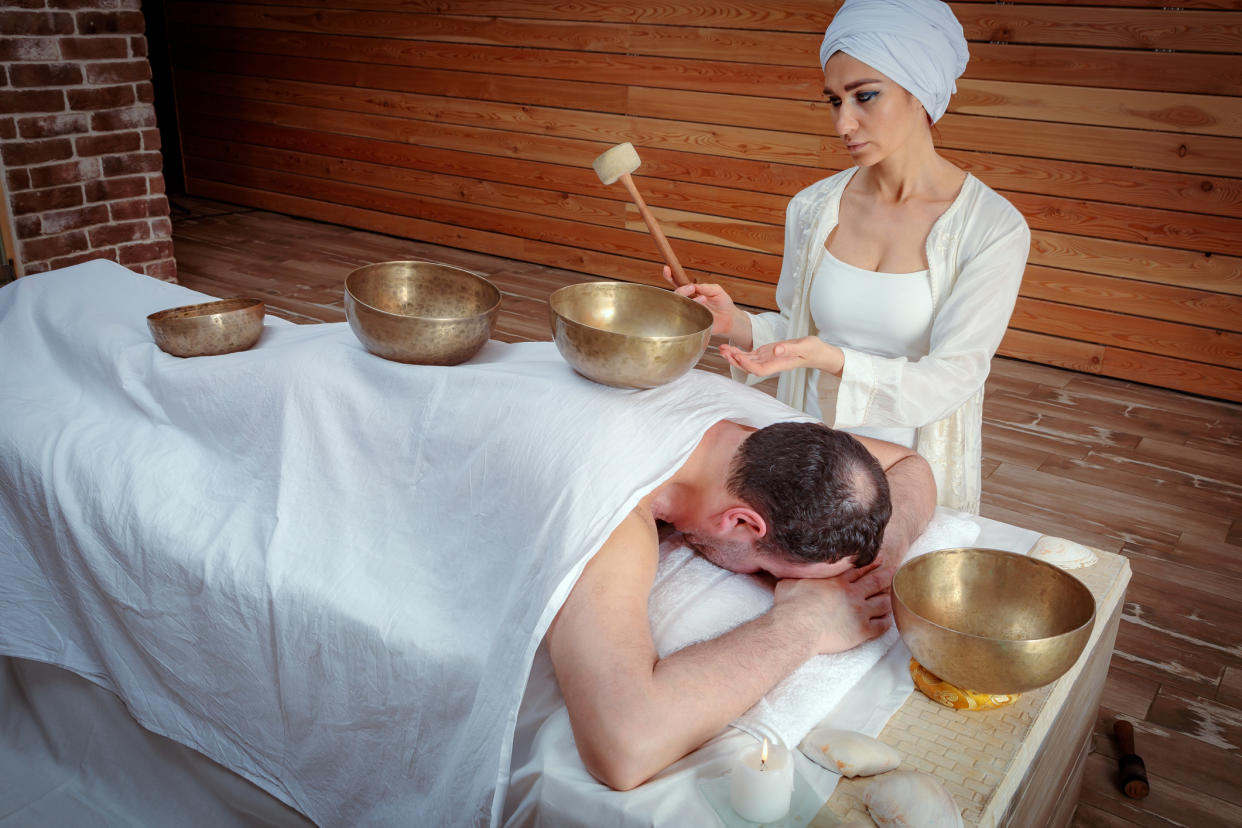What is a sound bath? Inside the relaxation technique that can decrease stress, boost energy and improve sleep

Sit back, relax and let the sound waves wash over you.
Sound baths — which do not involve water, but rather laying on a yoga mat and listening to instrumental music, such as the sounds of gongs, bells and singing bowls — have been shown to relieve stress and could even reduce pain, according to University of California, San Diego, public health research psychologist Tamara Goldsby.
“In our research, we found that sound baths significantly reduced tension, anxiety, depression and anger among other negative mood states,” Goldsby, who has extensively studied sound baths, told USA Today. “Additionally, it increased spiritual well-being as well as providing other benefits, such as potential reduction in physical pain.”
Stress can affect the whole body, causing inflammation, pain, anxiety, anger, restlessness, stomach upset and sleeping problems. Reducing it, then, is vital for improving overall health.
Some research has found a link between 15-minute sound baths with a decrease in cortisol, the stress hormone and deeper relaxation.
“Generally, participants of sound baths can feel calmer, experience improved mood, notice an increase in energy, have improved sleep and experience an overall reduction in stress,” integrative neurologist and author Kulreet Chaudhary told USA Today.

Sound baths — not to be confused with music therapy — are meditative and rely on the vibrations from the instrumentals. It often also involves an instructor, who might have a background in yoga or meditation, chanting some sort of mantra.
The therapeutic experience, which ranges in duration from 30 to 90 minutes, can be done virtually, one-on-one or in a group setting, although the at-home method may not be as effective since sound baths rely on sound vibrations.
“The most common instruments that are used are called singing bowls and those are either metal or a composite of seven metal alloys or crystal quartz and those produce a very unique type of sound,” Goldsby told TODAY.
In recent years, celebrities like Adele and Kendall Jenner have revealed their ritualistic sound bath practice that allows them to destress, and the rise in popularity could be attributed to its ease. In fact, “you don’t have to learn anything to experience the benefits,” Goldsby noted.

“It also has a particular effect on the brain because music or sound healing has a particular vibration,” UCLA psychiatrist Dr. Helen Lavretsky told TODAY, adding that anyone can partake in a sound bath five or 10 minutes every day to reap the benefits.
“It’s just one practice, a very ancient practice, that can be part of the portfolio of tools that leads to stress reduction.”

